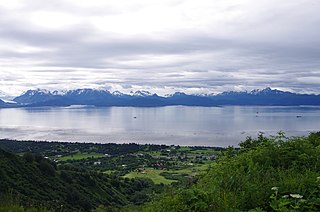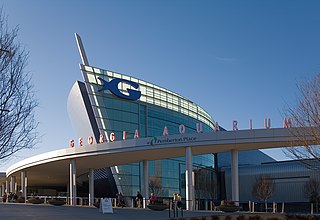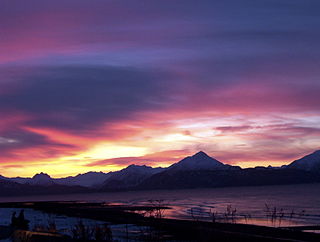
Whaling is the hunting of whales for their usable products such as meat and blubber, which can be turned into a type of oil that became increasingly important in the Industrial Revolution. It was practiced as an organized industry as early as 875 AD. By the 16th century, it had risen to be the principal industry in the Basque coastal regions of Spain and France. The whaling industry then spread throughout the world and became increasingly profitable in terms of trade and resources. Some regions of the world's oceans, along the animals' migration routes, had a particularly dense whale population, and became the targets for large concentrations of whaling ships, and the industry continued to grow well into the 20th century. The depletion of some whale species to near extinction led to the banning of whaling in many countries by 1969, and to an international cessation of whaling as an industry in the late 1980s.

Whales are a widely distributed and diverse group of fully aquatic placental marine mammals. As an informal and colloquial grouping, they correspond to large members of the infraorder Cetacea, i.e. all cetaceans apart from dolphins and porpoises. Dolphins and porpoises may be considered whales from a formal, cladistic perspective. Whales, dolphins and porpoises belong to the order Cetartiodactyla, which consists of even-toed ungulates. Their closest non-cetacean living relatives are the hippopotamuses, from which they and other cetaceans diverged about 54 million years ago. The two parvorders of whales, baleen whales (Mysticeti) and toothed whales (Odontoceti), are thought to have had their last common ancestor around 34 million years ago. Mysticetes include four extant (living) families: Balaenopteridae, Balaenidae, Cetotheriidae, and Eschrichtiidae. Odontocetes include the Monodontidae, Physeteridae, Kogiidae, and Ziphiidae, as well as the six families of dolphins and porpoises which are not considered whales in the informal sense.

The narwhal, also known as a narwhale, is a medium-sized toothed whale that possesses a large "tusk" from a protruding canine tooth. It lives year-round in the Arctic waters around Greenland, Canada and Russia. It is one of two living species of whale in the family Monodontidae, along with the beluga whale, and the only species in the genus Monodon. The narwhal males are distinguished by a long, straight, helical tusk, which is an elongated upper left canine. The narwhal was one of many species described by Carl Linnaeus in his publication Systema Naturae in 1758.

Kenai Peninsula Borough is a borough of the U.S. state of Alaska. As of the 2020 census, the population was 58,799, up from 55,400 in 2010. The borough seat is Soldotna, the largest city is Kenai, and the most populated community is the census-designated place of Kalifornsky.

Beluga is a census-designated place (CDP) in Kenai Peninsula Borough, Alaska, United States. The population was 20 at the 2010 census, down from 32 in 2000.

The Saguenay–St. Lawrence Marine Park is a National Marine Conservation Area, one of three in the Canadian national park system, located where the Saguenay River meets the Saint Lawrence River. This park is jointly managed by Parks Canada and Sépaq. It is the first park in all of Canada to protect a purely marine environment, and covers a surface area of 1,245 km2. The area that is now the Saguenay–St. Lawrence Marine Park is a part of the Innue Essipit First Nation's land claim, and a treaty resulting from this claim could impact activities that are practiced within the park. The region surrounding the park is an important part of the history of Canada, being one of the first points of contact between Indigenous Peoples and European explorers and the birthplace of the intercontinental fur trade.

The beluga whale is an Arctic and sub-Arctic cetacean. It is one of two members of the family Monodontidae, along with the narwhal, and the only member of the genus Delphinapterus. It is also known as the white whale, as it is the only cetacean to regularly occur with this colour; the sea canary, due to its high-pitched calls; and the melonhead, though that more commonly refers to the melon-headed whale, which is an oceanic dolphin.

Whale watching is the practice of observing whales and dolphins (cetaceans) in their natural habitat. Whale watching is mostly a recreational activity, but it can also serve scientific and/or educational purposes. A study prepared for International Fund for Animal Welfare in 2009 estimated that 13 million people went whale watching globally in 2008. Whale watching generates $2.1 billion per annum in tourism revenue worldwide, employing around 13,000 workers. The size and rapid growth of the industry has led to complex and continuing debates with the whaling industry about the best use of whales as a natural resource.

Cook Inlet stretches 180 miles (290 km) from the Gulf of Alaska to Anchorage in south-central Alaska. Cook Inlet branches into the Knik Arm and Turnagain Arm at its northern end, almost surrounding Anchorage. On its southern end, it merges with Shelikof Strait, Stevenson Entrance, Kennedy Entrance and Chugach Passage.

Shedd Aquarium is an indoor public aquarium in Chicago, Illinois, in the United States. Opened on May 30, 1930, the 5 million US gal aquarium was for some time the largest indoor facility in the world. Today it holds about 32,000 animals.

Georgia Aquarium is a public aquarium in Atlanta, Georgia, United States. It exhibits hundreds of species and thousands of animals across its seven major galleries, all of which reside in more than 11 million US gallons (42,000 m3) of water. It was the largest aquarium in the world from its opening in 2005 until 2012 when it was surpassed by the S.E.A. Aquarium in Singapore and the Chimelong Ocean Kingdom in China; the Georgia Aquarium remains the largest aquarium in the United States and the third largest in the world.
Natural Resources Conservation Service (NRCS), formerly known as the Soil Conservation Service (SCS), is an agency of the United States Department of Agriculture (USDA) that provides technical assistance to farmers and other private landowners and managers.

Kachemak Bay is a 40-mi-long (64 km) arm of Cook Inlet in the U.S. state of Alaska, located on the southwest side of the Kenai Peninsula. The communities of Homer, Halibut Cove, Seldovia, Nanwalek, Port Graham, and Kachemak City are on the bay as well as three Old Believer settlements in the Fox River area, Voznesenka, Kachemak Selo, and Razdolna.

The kaluga, also known as the river beluga, is a large predatory sturgeon found in the Amur River basin. With a maximum size of at least 1,000 kg (2,205 lb) and 5.6 m (18.6 ft), the kaluga is one of the biggest of the sturgeon family. Like the slightly larger beluga, it spends part of its life in salt water. Unlike the beluga, this fish has 5 major rows of dermal scutes and feeds on salmon and other fish in the Amur. They have gray-green to black backs with a yellowish green-white underbelly.

The Vancouver Aquarium is a public aquarium located in Stanley Park in Vancouver, British Columbia, Canada. In addition to being a major tourist attraction for Vancouver, the aquarium is a centre for marine research, ocean literacy education, climate activism, conservation and marine animal rehabilitation.

Puget Sound is a deep inlet of the Pacific Ocean in Washington, extending south from the Strait of Juan de Fuca through Admiralty Inlet. It was explored and named by Captain George Vancouver for his aide, Peter Puget, in 1792.

The Cook Inlet Aquaculture Association (CIAA) is a non-profit organization based in Kenai, Alaska, that works to create sustainable salmon stocks in the Cook Inlet area.
The Chuitna Coal Project is a proposed coal strip mine that, if granted state and federal permits, would be built about 45 miles (72 km) southwest of Anchorage, Alaska, in an area known as the Beluga Coal Fields near the Chuitna River and the small communities of Tyonek and Beluga in upper Cook Inlet.
The Chuitna River, sometimes called the Chuit, emerges from a broad expanse of forest and wetlands west of Anchorage and drains into Cook Inlet. The river and its tributaries support all five species of Pacific salmon, Dolly Varden and trout, and the region is home to abundant wildlife, including moose, wolves, and bears. The area attracts sports fishing and hunting enthusiasts, and supports subsistence hunting and fishing activities. River fish stocks enhance Cook Inlet salmon populations.
In December 2016, a natural gas pipeline running beneath Turnagain Arm in Cook Inlet, near Nikiski, Alaska, southwest of Anchorage ruptured, leaking large quantities of natural gas into the water. The escaped gas rose and was released into Earth's atmosphere after clearing the surface. An estimated 6 - 8.8 million litres of natural gas was released from the damaged pipe per day. The leak was first reported in February 2017. The pipeline operator, Hilcorp Energy, said that there was too much sea ice to safely launch a repair mission. They added that shutting off the flow of natural gas through the pipeline would compound the problem, because the pipe had previously been used to transport crude oil and the residual crude in the pipe would then be exposed to the sea water once the pipeline was depressurized.
















